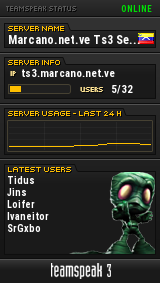Sistema de programación de Trayectorias para el Manipulador MA2000
Posted by Juan Marcano | Posted in Electrónica, Hardware, Software | Posted on 25-06-2015
1
From my grade project (2013):
TRAJECTORY PROGRAMING SYSTEM FOR THE MA2000 ROBOT ARM:
The MA2000 its a six degree of freedom robot arm, 3 joints are moved by DC motors. L928 IC drive 3 motors, the 3 motors left were replaced with hobby servos. A control system was implemented using microcontroller DSPIC30F3011, the joints position were read using potentiometers and the microcontroller DAC. A PI controller was implemented using the dsPIC DSP libraries, the compiler was the C30 (academic version) . A PC software was developed using the QT libraries and the QT creator IDE. The software communicates with the controller and allows the dynamic adjustment of the PID controller and its capable of show graphically the dynamic response of each joint, this was programmed using the QWT library, the software allows the programming of «point to point» trajectories using a simple language and allows to record trajectories moving the robot arm by hand. These trajectories are recorded in plain text and can be generated with tools like MATLAB and the Peter Corke robotics toolbox.
Wiki page (spanish):
Http://blog-j.marcano.net.ve/robotwiki
Juan Marcano
juan@marcano.net.ve
El MA2000 Es un brazo de 6 grados de libertad accionado por motores DC. Se emplearon drivers L298 para manejar tres de los motores, los tres motores restantes se reemplazaron por motores de modelismo. Se diseñó un sistema de control mediante el microcontrolador dsPIC30F3011 en el cual la la posición de cada articulación es medida mediante potenciómetros y se implementó un controlador de posición PID independiente para tres articulaciones que utiliza el motor DSP del dsPIC mediante las librerías incluidas con el compilador C30 en su versión académica. Se desarrolló un software en el PC haciendo uso de las librerías Qt. El software se comunica con el microcontrolador y permite el ajuste dinámico del controlador PID y la visualización en tiempo real de la respuesta dinámica de cada articulación, esta característica se programó utilizando la librería QWT, el software también permitió la programación de trayectorias simples punto a punto mediante guiado o aprendizaje. El software es capaz de guardar las trayectorias en archivos de texto plano de tal que forma las trayectorias pueden ser generadas con otras herramientas tales como MATLAB y la Toolbox de robótica de Peter Corke.

